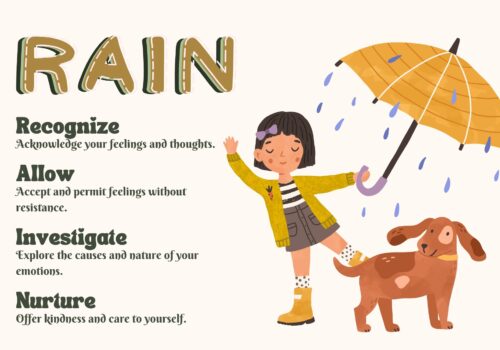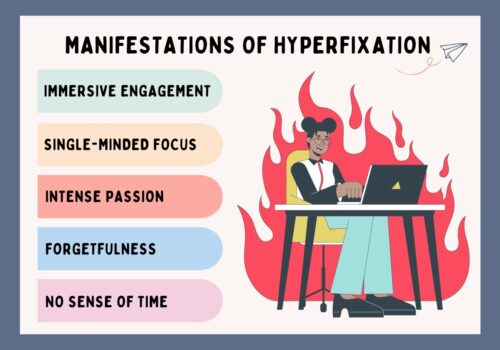Mindfulness has become more and more prevalent in our everyday lives. There has been a rise in the number of people practicing mindfulness, as well as an increased interest in the practice. This is because mindfulness can be immensely beneficial for both your mental and physical health. In fact, research has shown that mindfulness can also have positive effects on your brain structure and help you manage stress better. If you’re interested in learning more about what mindfulness is, how it can benefit your life and how to practice mindfulness, read on!
What is Mindfulness?
When you practice mindfulness, you’re purposefully paying attention to what you’re doing and how you’re feeling in the present moment. That means that when you’re practicing mindfulness, you’re not thinking about anything else that is not relevant to the current moment. This can be done through different techniques, such as meditation and mindful activities. And when you’re practicing mindfulness, you’ll experience a number of positive benefits, such as reduced stress, improved mental clarity and reduced pain. When we think about mindfulness, we often picture someone sitting cross-legged in silence, trying to detach themselves from the world around them and be in a meditative state. However, this is not exactly what mindfulness is. You can be mindful while walking, eating or engaging in any other activity.
What Are the Benefits of Mindfulness?
- Reduce Stress – Mindfulness helps you understand and let go of the things that might be causing you stress and anxiety. Therefore, it can be a great way to de-stress after a long day.
- Boost Self-Esteem – When you learn how to be mindful, you learn how to accept yourself for who you are, without judgment or criticism. This further allows you to be kinder to yourself and see your good qualities.
- Improved Mental and Physical Health – When you’re mindful, you’re less likely to engage in harmful habits such as over-eating or smoking. This, coupled with the positive effect it has on your mental health can help you maintain good physical health.
- Improved Brain Health and Structure – Although scientists are not completely sure how this occurs, many studies have shown that practicing mindfulness can have a positive effect on the brain.
- Easier To Manage Emotions – Mindfulness can help you manage your emotions more effectively and respond to situations with a more balanced approach, rather than an emotional outburst. With practice, you will be able to respond to situations in a way that is more helpful to you and others.

Mindfulness Meditation
There are two key steps to mindfulness meditation: focusing on your breath and detaching from your thoughts. When you’re focusing on your breath, you’re trying to notice and feel the air as it enters and exits your body. You may want to imagine your breath as a color. For example, when you inhale, you can imagine the breath as a bright green color entering your body. When you exhale, you can imagine the breath as a red color leaving your body. When you notice that your mind has wandered away from focusing on your breath, you detach yourself from your thoughts. You don’t judge yourself for having a wandering mind, you simply acknowledge it and go back to focusing on your breath. You can also use a counting technique to bring yourself back to the present moment.
Mindful Breathing
When you’re practicing mindful breathing, you’re trying to slow down and notice the sensations of your breath entering and exiting your body. You can do this sitting or lying down, or even while you’re walking. As with meditation, you can use a color to help you focus on your breathing. For instance, you can imagine a bright red color entering your body when you inhale, and a green color when you exhale. Alternatively, you can use an imagery technique, such as imagining that your breath is an ocean current entering your body, or a warm breeze going in and out of your body. When you’re mindful breathing, try to avoid controlling your breath in any way. Simply notice the sensations of your breath, try to keep your focus on your breathing and don’t try to change it in any way.
Mindful Walking
This technique is used to help you relax and let go of the tension in your body. When you’re mindful walking, you’re only focused on where your feet are stepping, as well as how they are contacting the ground. You might also want to try counting your steps as you walk. When you’re mindful walking, you want to avoid looking ahead to where you’re going, and avoid looking behind you. You also don’t want to have headphones on, as you want to be fully aware of your surroundings. When you’re mindful walking, you can use different imagery techniques, such as imagining yourself in a calm, peaceful place.
Mindful Eating
When you’re mindful eating, you’re trying to slow down, notice the smells, flavors and textures of your food, and be present during the eating experience. You can do this either sitting at a table, or standing up and going for a walk. When you’re mindful eating, you want to avoid eating in front of the TV, computer or any other screen, as this can take your attention away from the food. You also want to avoid reading, as well as other activities such as scrolling through your phone. Instead, you want to give your full attention to your food, so that you can experience it fully. When you’re mindful eating, you can also use different imagery techniques to help you focus on the food and be present during the eating experience. You can imagine that you can taste and smell the food more vividly, or you can imagine that you’re eating something that you really enjoy.
Mindful Activities
When you’re practicing mindful activities, you’re trying to focus on what you’re doing, and be present during the activity. You can do this with any activity and on any occasion. You can be mindful when cleaning your house, going for a walk, gardening or doing any other activity. When you’re being mindful and doing an activity, you want to avoid doing it as quickly as possible, and instead, you want to slow down, and focus on the details of the activity. You can use different imagery techniques, such as imagining that you’re doing the activity with a steady hand, or focusing on the sounds that you hear while you’re performing the activity.
Conclusion
Mindfulness is an excellent way to improve your mental and physical health, as well as manage stress better. When you practice mindfulness, you’re purposefully paying attention to what you’re doing and how you’re feeling in the moment. That means you’re not thinking about anything else that is not relevant to the current moment. This can be done through different techniques, such as meditation and mindful activities. When you’re practicing mindfulness, you’ll experience a number of positive benefits, such as reduced stress, improved mental clarity and reduced pain.
















